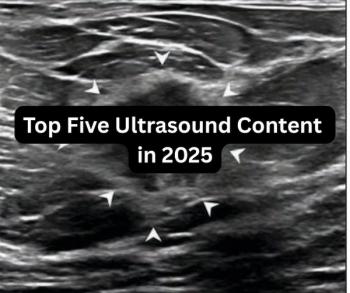
Why Plaque Burden is Critical to Assessing Cardiovascular Risk: An Interview with Ibrahim Danad, MD, PhD
In a recent interview, Ibrahim Danad, M.D., Ph.D., discussed new research findings from the multicenter CONFIRM2 trial and use of the AI-CT software to obtain automated quantification of plaque burden based off coronary computed tomography angiography (CCTA) scans.
For too long, Ibrahim Danad, M.D., Ph.D., said predicting a patient’s cardiovascular risk was largely dependent on traditional risk factors like cholesterol, diabetes and hypertension without enough focus on the primary disease process of coronary atherosclerosis. While coronary computed tomography angiography (CCTA) provided non-invasive visualization of the primary disease, Dr. Danad suggested in a recent interview with Diagnostic Imaging that clinicians “were not exploring or leveraging the CT scan as we should” due to being stuck in a paradigm of looking for obstructive disease to explain patient symptoms.
“We realized, using the CONFIRM1 data (although it was not using AI) is that plaque burden is what matters in a patient. It's not the disease, It’s not obstructive lesions, although that may explain a patient's symptoms, but in the long term, it's plaque burden that matters,” maintained Dr. Danad, a cardiologist at the Radboud University Medical Center in Nijmegen, the Netherlands.
“You don't capture plaque burden using traditional risk scores. You don't capture the true plaque burden just using a CT scan with a visual assessment of the coronaries. You need quantification to have an impression of how high or low the plaque burden of a patient is.”
In the recent international multicenter CONFIRM2 trial, involving over 1,900 patients who had clinically indicated CCTA exams, researchers found that adjunctive use of the AI-powered AI-QCT software (Cleerly) for coronary plaque quantification provided improved prognostic assessment for major adverse cardiovascular events (MACE) and mortality beyond that of CAD-RADS 2.0 and the coronary artery calcium score (CACS). For patients without severe stenosis, the use of adjunctive AI-QCT with CAD-RADS and clinical predictive factors improved the AUC from 72 percent to 77 percent.
Identifying plaque burden with the adjunctive AI QCT software in patients previously considered as having a low risk for cardiac events may facilitate earlier treatment intervention, according to Dr. Danad, who lectured about the CONFIRM2 trial findings at the recent American Heart Association meeting.
“ … Probably what we hope to see is that those patients will be treated with statin therapy sooner than we will do now using our conventional risk scores. So those are patients that you probably wouldn't treat with preventive therapy, and AI QCT will probably show you that we do need to treat those patients,” added Dr. Danad.
(Editor’s note: For related content, see “
For more insights from Dr. Danad, watch the video below.
Newsletter
Stay at the forefront of radiology with the Diagnostic Imaging newsletter, delivering the latest news, clinical insights, and imaging advancements for today’s radiologists.




























